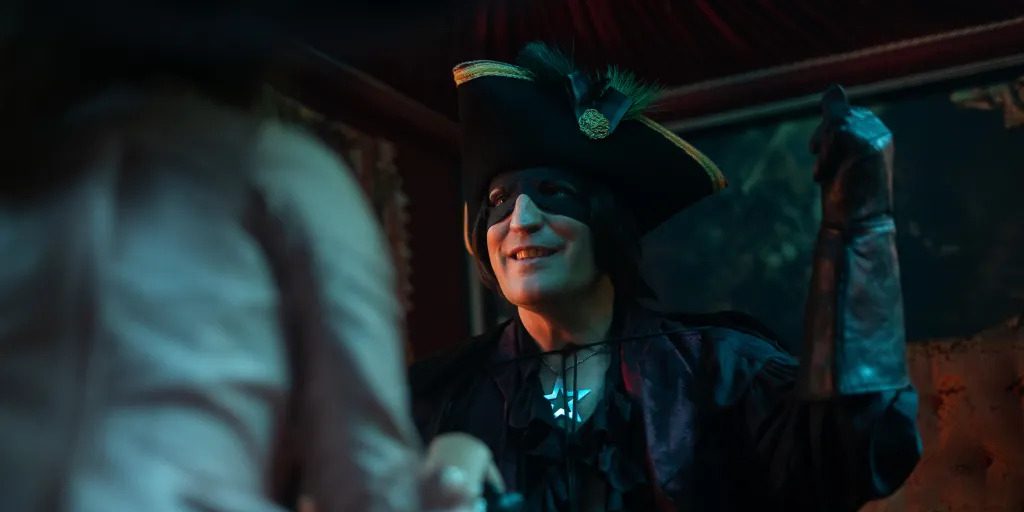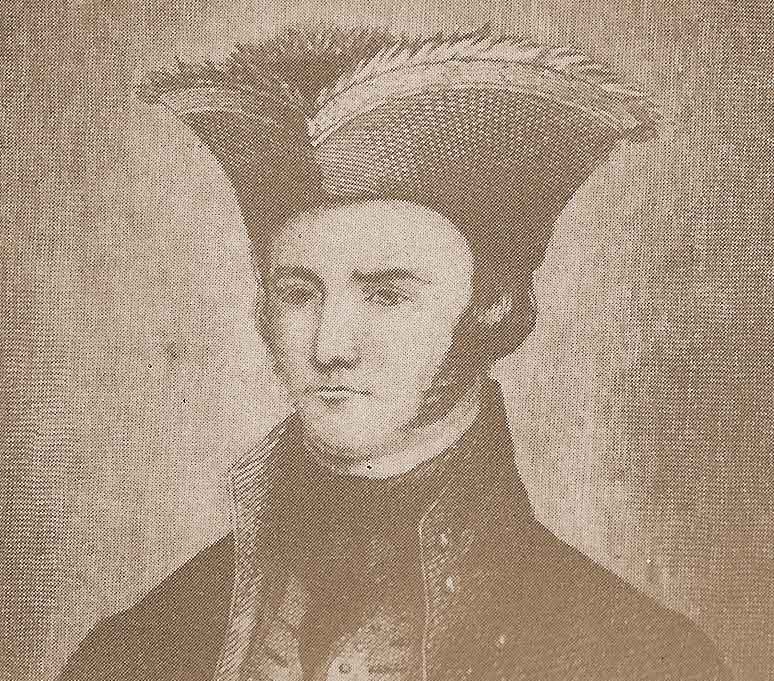In the opening scenes of Apple TV +’s ‘The Completely Made-Up Adventures of Dick Turpin,’ the titular character finds himself on the brink of execution, sentenced for the myriad crimes he committed as a highwayman. As he awaits the gallows, Turpin seizes the opportunity to recount his tales, transporting the audience to the nostalgic echoes of his bygone glory days. The narrative unfolds with Turpin unexpectedly assuming leadership of the Essex gang, a cattle robbery outfit he had not originally intended to join.
After a fateful encounter resulting in the demise of Tom King, Turpin reluctantly steps into the role of the gang’s leader, setting the stage for a cascade of imaginary exploits and thrilling escapades. In the uproarious tales that kick off, the creators, Claire Downes, Ian Jarvis, and Stuart Lane, craft a comedy destined to leave a lasting impression. With the detailed names and the uncanny familiarity that the moniker Dick Turpin carries, one can’t help but ponder if this hilarious story draws inspiration from a real-life character.
The History of Dick Turpin
‘The Completely Made-Up Adventures of Dick Turpin,’ true to its name, draws its inspiration not from real events but from the rich tapestry of British folklore. The central character, Dick Turpin, is indeed grounded in reality as an infamous highwayman who roamed the English countryside during the early 1700s. While the series takes a whimsical and fictional approach to Turpin’s escapades, it playfully intertwines elements of historical truth with the creators’ imaginative storytelling.

Noel Fielding, who plays the character of Turpin, said, “We thought it was a great opportunity because no one had done Dick Turpin in comedy. We reimagined him. He’s a pacifist and a vegan and inclusive and quite creative because that would be more fun to write and more interesting..”
Dick Turpin, born in Hempstead, Essex, in 1705, emerged as the fifth child among six siblings in the family of John Turpin and Mary Elizabeth Parmenter. John was a butcher and an innkeeper and Turpin was learning the trade from him. In 1725, he married Elizabeth Millington, and the couple supposedly relocated to Buckhurst Hill, Essex. He opened his own butcher’s shop in the area.
During that period, the Essex gang, colloquially known as the Gregory gang due to their leader Samuel Gregory, was notorious for their involvement in deer poaching in the region. It was within this landscape that Turpin crossed paths with the gang. Leveraging his skills as a butcher, Turpin became a valuable asset to the gang, aiding in the processing and distribution of the deer meat they acquired through their illicit activities.
The gang, consisting of individuals like Samuel Gregory, his brothers Jeremiah and Jasper, Joseph Rose, Mary Brazier, John Jones, Thomas Rowden, and John Wheeler, found a lucrative partnership with Turpin in the early 1730s. Recognizing the financial advantages of this collaboration, Turpin eventually decided to fully immerse himself in the gang’s endeavors, bidding farewell to his butcher profession in pursuit of more lucrative ventures.

In the subsequent years, Turpin continued his association with the Essex gang, actively participating in a series of ruthless livestock thefts that wreaked havoc on the local population. The turning point came in 1735 when one of the gang members, John Wheeler, was apprehended. Faced with legal consequences, Wheeler chose to cooperate with the authorities and provided crucial information about Turpin and the rest of the gang.
Turpin made a strategic exit from the Essex gang and transitioned into a solo career as a highwayman in the vicinity of Epping Forest. Targeting lone travelers, he swiftly gained notoriety for his daring attacks, and reports of his involvement in solo thefts began to circulate. During this period, his associate Thomas Rowden, known as “the pewterer,” faced legal repercussions and was convicted, prompting Turpin to adopt a low profile throughout 1736. However, in 1737, Turpin resurfaced on the radar when sightings of him, accompanied by his wife, her maid, and a man named Robert Nott, were reported in Puckeridge. While Turpin managed to evade capture, the authorities successfully apprehended the rest of his companions, leading to their imprisonment.
Turpin forged alliances with two fellow highwaymen, Matthew King and Stephen Potter, during this period, and together they carried out numerous robberies. However, their criminal partnership took a bad turn during a botched robbery that resulted in King’s death. Various rumors circulated, with one speculating that Turpin was responsible for the fatal shot. In June 1727, Turpin adopted the alias John Palmer and expanded his operations to Yorkshire and Lincolnshire. Under this new identity, he continued his criminal activities, specializing in horse theft, which drew the attention of authorities.
In 1738, Dick Turpin faced the grim specter of justice as he was arrested on charges of horse theft, a crime carrying the death penalty at the time. His legal woes escalated with additional accusations, including the theft of three horses from Thomas Creasy and a mare with a foal. The York Assizes held his trial, swiftly leading to a death sentence. On the somber day of April 7, 1739, Turpin met his fate at Knavesmire, where he was hanged for his crimes. His lifeless body found its final repose in the graveyard of St George’s Church, Fishergate, marking the end of the infamous highwayman’s journey.
The series artfully navigates the blurred lines between historical fact and imaginative storytelling, taking considerable creative liberties to breathe new life into the legendary figure and the subsidiary characters associated with him. With a whimsical reimagination of characters and a narrative that spins tales beyond the confines of reality, the show delves into the larger-than-life legends that have grown around Turpin. The result is a cinematic endeavor that not only entertains but also challenges our perceptions of such figures that history leaves behind.
Read More: Is Dick Turpin’s Essex Gang Real? Who Were its Members?


You must be logged in to post a comment.